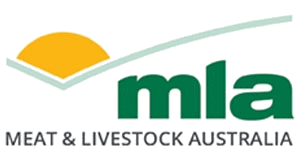Subscribe to R&D Round-Up newsletter
Stay informed with a short, sharp monthly summary of MLA’s latest research reports.
NLGC – National Livestock Genetics Consortium
The National Livestock Genetics Consortium (NLGC) was established in October 2016 and is governed by a skills based taskforce. The consortium was developed after considerable industry consultation to provide increased collaboration, communication and investment in the livestock genetics sector. The primary aim of this initiative is to significantly increase the rate of genetic progress achieved in the sheep and beef industries.
The NLGC taskforce acts in an advisory capacity and provides a formal industry consultation platform for the investment in livestock genetics, in accordance with the taskforce terms of reference. Recommendations from the Taskforce are considered by the MLA Board and Peak Industry Councils in making decisions on major investments into genetics and genomics RD&A that address the NLGC aims.
The aims of the NLGC are:
- To double the annual rate of improvement in industry genetic value by 2022.
- To coordinate research, reduce timelines and costs ensuring delivery of world leading genetic improvement.
- The seamless transfer of information to industry and provision of easy-to-use data sharing products and services – one national data base accessible by all industry participants.
- Improve adoption through unifying the delivery of genetic RD&A across the livestock industry.
- Deliver an additional $400 million in industry improvements to the commercial livestock industry value chain.
The Consortium will ensure coordinated research delivery, reducing timelines and delivery costs of each partner operating separately. It will deliver a seamless transfer of information to industry and provide easy-to-use products and services. Through supporting projects that deliver one or more of the identified imperatives, which include Culture Change, Disruptive Technology, National Data Platform and World Leading R&D.
Taskforce Positions
The NLGC is governed by a skills based Taskforce established and funded by Meat & Livestock Australia (MLA). The role of the NLGC Taskforce is to provide a formal industry consultation platform for the investment in livestock genetics led by genetic researchers and key industry stakeholders.
The NLGC Taskforce representation is balanced across the following sectors:
- Northern Beef
- Southern Beef
- Breed Societies (x2)
- Researchers (x2)
- Merino producer
- Prime lamb producer
- Integrated supply chain
- Processor
- Composite breeder
- Adoption & Extension
National Livestock Genetics Consortium Strategic Plan
The Taskforce acts in an advisory capacity in accordance with the National Livestock Genetics Consortium Taskforce Terms of Reference.
Meat & Livestock Australia and the National Livestock Genetics Consortium are seeking expressions of interest from individuals with extensive professional experience in northern pastoral companies. For more information, please refer to NLGC Taskforce Composite Breeding Vacancy.
For any enquiries about the NLGC or becoming a taskforce member please email Hamish Chandler, Genetics Program Manger or Caris Jones, Genetics Project Manager.
Background on the creation of the NLGC
A Genetics Steering Group (GSG) comprising representatives of key investors and end users of genetics research in the beef industry was established in 2015 to lead the identification of research, development and adoption (RD&A) priorities that should be addressed over the next 5 years.
The Genetics Steering Group was developed following a Scoping Workshop in May which agreed on the major elements of a vision of what will be needed in the coming decades to at least double the current rate of genetic gain across the beef industry.
The Workshop identified two distinct but related activities that need to occur in parallel:
- The resolution of the operational and contractual issues around BREEDPLAN licensing and service provision which are impeding further uptake and efficient use of the system and resulting in suboptimal benefits to industry; and
- The development of a transparent and nationally-coordinated RD&A investment plan agreed by the major stakeholders within the industry.
The owners of the BREEDPLAN software (MLA, UNE and NSW DPI) will address the first of these activities with the Licensee (ABRI), breed societies and interested parties.
A consultation draft and a series of industry discussion papers were presented for industry feedback between November 2015 and February 2016. These papers examined the potential benefits, advantages and disadvantages of various investment options in (RD&E) that could be developed over the next 5 years, and are listed below.
From the industry discussion papers MLA and industry representatives developed an investment prospectus for a national livestock genetic research and development, evaluation and delivery consortium. The National Livestock Genetics Consortium was then established in 2016.
Consultation paper: Beef Genetics RD&E Priorities 2016 - 2021
Industry Discussion Papers
- Significant changes in both technology and to the beef breeding sector that need to be considered in developing livestock genetics RD&E investment priorities for the next five years – This paper outlines areas that need to be considered in future investments due to likely technology and structural changes across the beef breeding sector.
- Moving to multi-breed and crossbred BREEDPLAN analyses – This paper discusses the different approached, issues and future requirements to be considered in delivering a multi-breed analysis or analyses to the Australian beef industry.
- Improving data infrastructure and exchange to increase beef genetic gain and industry benefit – This paper describes some of the key issues and discussion points around the current genetic evaluation infrastructure.
- Increasing the relevance of genetic RD&E for bull breeders – This paper highlights some of the challenges in developing a single national evaluation system for a diverse range of breeders, and producing different management methods and tools that are applicable to all bull breeders.
- Who benefits from genetic evaluation and improvement? – This paper describes who benefits from genetic evaluation and improvement in the Australian beef industry, and how benefits are generated and distributed. These need to be considered in developing a strategy and implementation plan for industry investment in genetics.


